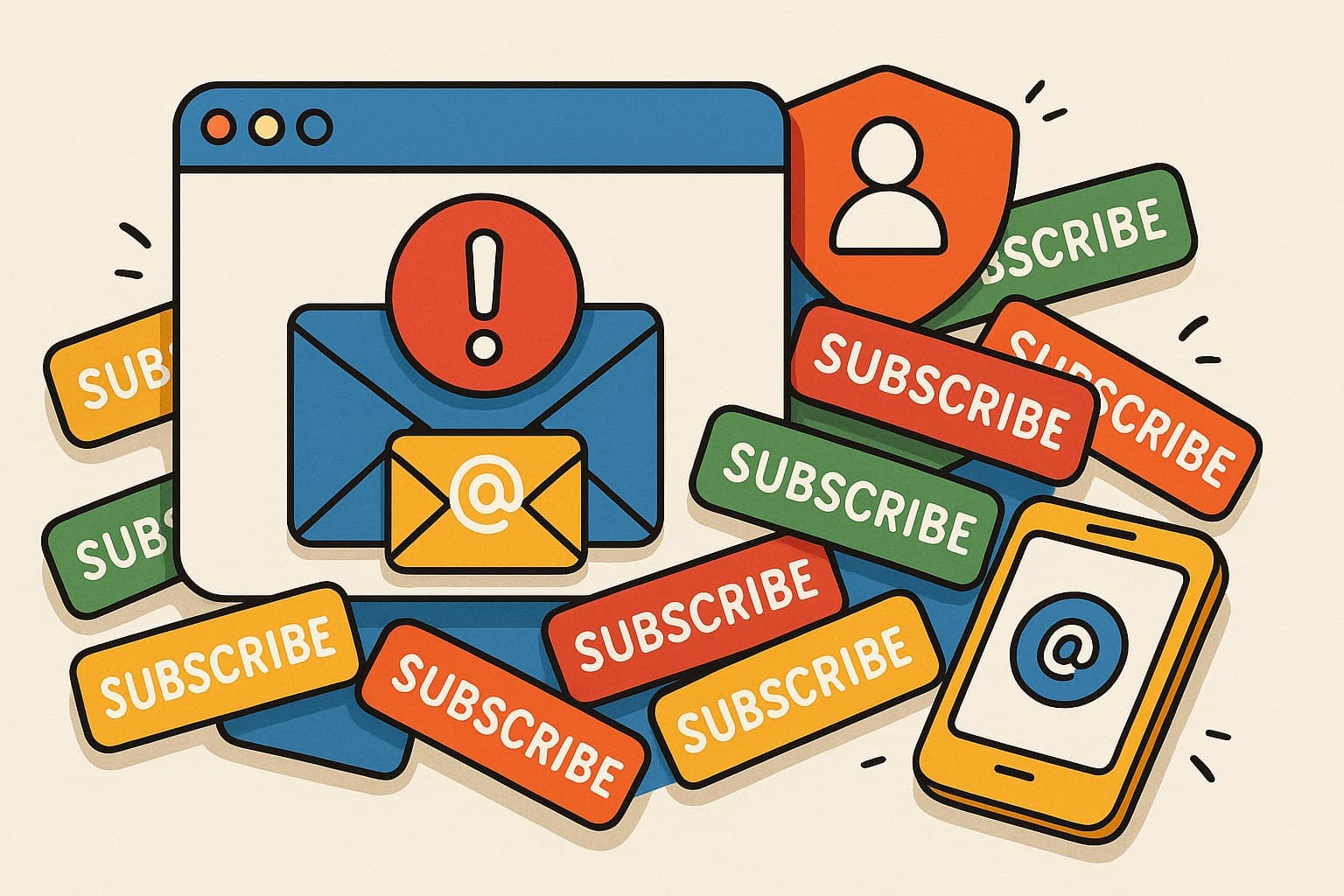Subscription Overload Is Real — Use Alias Emails to Take Back Control

Subscription Overload Is Real — Use Alias Emails to Take Back Control
There was a time when subscribing to a newsletter felt empowering — a way to stay informed, inspired, connected.
Now it feels like drowning.
Every brand, tool, and creator you’ve ever brushed past wants a permanent spot in your inbox.
The result? A digital avalanche of “quick updates,” “flash deals,” and “exclusive offers” that quietly erode your focus every morning.
But here’s the good news: you don’t need to unsubscribe from the internet.
You just need aliases — your secret weapon for regaining control of your digital life.
🧩 The Anatomy of Inbox Creep
Subscription creep doesn’t happen overnight.
It’s a slow, polite invasion:
- You sign up for a trial — just one newsletter for the tips.
- You follow a creator — just to get their free guide.
- You buy something online — just to track shipping updates.
And suddenly, your inbox is a hyperactive marketplace of reminders, promotions, and algorithmic engagement bait.
You’re not addicted to email.
Email is addicted to you.
💣 The Hidden Cost of a Cluttered Inbox
It’s not just annoyance — it’s cognitive tax.
Every time you skim, sort, or delete, you lose mental bandwidth.
Studies show that context-switching from cluttered inboxes can reduce productivity by up to 40%.
And ironically, the more overwhelmed you feel, the more likely you are to miss important messages — invoices, client updates, or verification links buried under “10% Off for You!”
Aliases restore the signal-to-noise ratio.
⚙️ How Alias Emails Work (and Why They’re Genius)
An alias is a custom address that forwards messages to your real inbox but keeps its own identity.
Think of it as a mask for your email — one you can remove at will.
Example:
shopping@you.burn → forwards to your main inbox.
When spam starts flooding in, you delete or deactivate that alias — no loss, no drama.
You can make as many as you like:
newsletters@you.burnoffers@you.burnbeta@you.burncoupons@you.burn
Each one acts as a containment zone.
If one gets compromised, your real inbox stays clean.
🧠 The Alias Strategy That Actually Works
- Start small. Create 3–4 aliases by category: newsletters, shopping, free trials, communities.
- Use filters. Tag each alias automatically when mail arrives.
- Audit monthly. Check which aliases have become noise-heavy and deactivate them.
- Don’t reuse aliases. If a site starts spamming, kill the alias and never look back.
- Protect your core address. Never hand out your real inbox again — not even for “verified updates.”
You’ll go from inbox firefighting to inbox gardening — pruning, shaping, and maintaining clarity.
🧩 Bonus: Aliases as Data Detectors
Here’s the power move few people know:
Aliases don’t just protect you — they expose who’s selling your data.
If your newsletter@you.burn alias starts receiving unrelated spam, congratulations — you’ve just caught a data leak.
You now know exactly which company shared or sold your information.
Delete the alias, and their tracking ecosystem collapses.
🧘 Inbox Minimalism: A Form of Digital Self-Care
Unsubscribing is reactive. Alias management is proactive.
It’s not about cutting off access — it’s about compartmentalizing trust.
You still get your updates, deals, and early-bird discounts — but on your terms.
You decide which worlds touch your attention and which stay quarantined.
The difference between chaos and clarity isn’t software — it’s structure.
🌍 Final Takeaway
In a world that monetizes your attention, every email address is a permission slip.
Your main inbox is sacred — guard it like your front door.
Aliases let you hand out spare keys instead of leaving it unlocked.
So next time a “too-good-to-miss” newsletter tempts you, don’t resist — just reroute.
Because peace of mind isn’t about opting out.
It’s about opting smart.